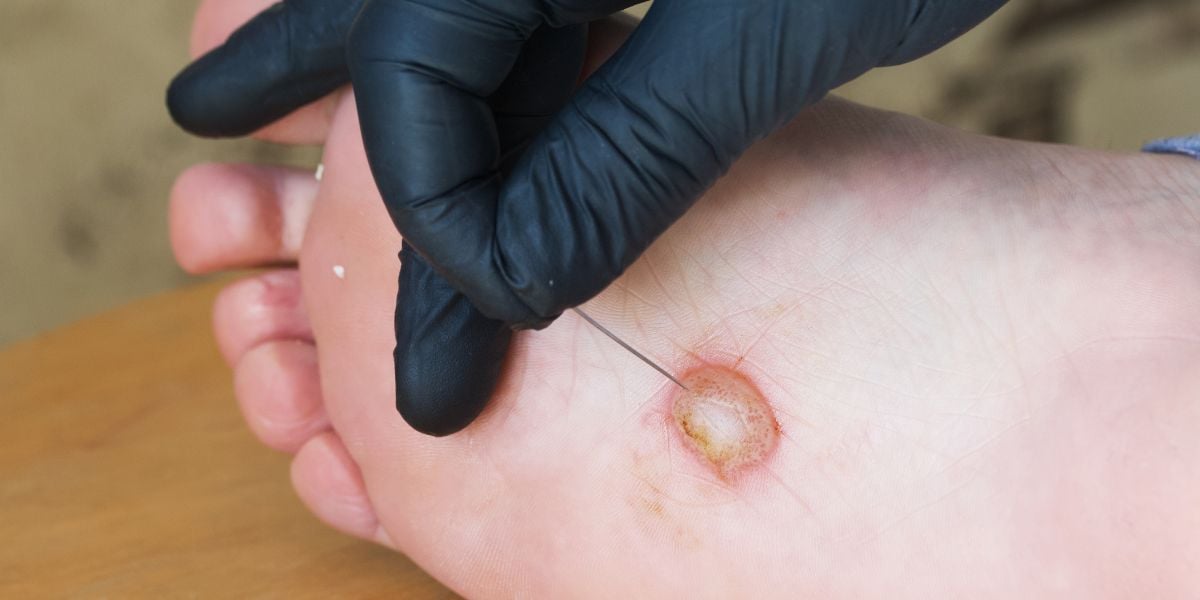More than a quarter of American seniors suffer from diabetes, a chronic illness that brings forth a host of complications. A worrying statistic suggests that 10 to 15 percent of those suffering from diabetes face the ominous possibility of foot and leg ulcers. If not treated, these wounds may get so bad that diabetic foot amputations can be required. In fact, 80 percent of the amputations result from foot ulcers, underscoring the critical importance of rigorous medical attention and preventive measures.

Diabetes management is a multi-faceted problem that requires a holistic strategy that goes beyond glucose control. Foot care is a linchpin in this endeavor that serves as the primary defense against the ever-present threat of diabetes-related amputations.
Understanding the Landscape
The world of diabetes and its complications is a complex one. People with diabetes are more likely to develop leg and foot ulcers. This is a sign of the need for proactive care and greater awareness. The statistics are stark, and it is evident that understanding these complexities will be crucial in the fight against amputations.
The Amputation Conundrum
The risk of losing limbs is always present for diabetics. It’s more than a statistic. It affects people personally. It’s a long road from a minor injury to the possibility of having to be amputated due to diabetes.
Daily Foot Care: A Shield against Amputation
The foundation of diabetes amputation prevention lies in daily foot care. This isn’t only about maintaining hygiene, but an extremely thorough method for the detection and treatment of potential issues prior to them escalating. This routine is comprised of everything from examining your feet for any injuries to making sure they are properly moisturized.
Vascular specialists: what is their role
While vascular specialists do not have a role involved in the treatment of diabetes, they can be a key factor in managing its complications. In order to alleviate discomfort in the legs and speed up wound healing, establishing optimal blood flow is a crucial aspect of treatment. This approach to collaboration has a clear goal of reducing the chance of diabetes-related amputations.
Strategies to Prevent Amputation
To be able to navigate the maze of diabetes amputation risk you require a combination of sensibility, vigilance and professional intervention. It is important for people with diabetes to adopt a proactive attitude. Regular checks with healthcare professionals including specialists in vascular surgery, can help with the early detection.
Leg Ulcers and Beyond the Triggers to Consider
Leg ulcers, typically the precursors to more serious complications, demand attention and knowledge. It is essential to recognize the triggers that can lead to leg ulcers. If it’s poor circulation or neuropathy or a mix of factors, determining the root causes allows for targeted intervention as well as individualized care.
Education as Empowerment
Instilling in people suffering from diabetes knowledge about the risks and ways to prevent them is essential. Education initiatives, both in healthcare settings and the broader community, can bridge the gap between awareness and taking action. Knowing the consequences of seemingly harmless wounds can trigger prompt responses, possibly stopping the need for diabetic foot Amputation.
Private Battles as well as Collective Triumphs
The battle against diabetes-related complications isn’t an individual battle, it’s a victory for the entire community. Participating in support networks, whether through the healthcare professionals or through group groups in the community, is the opportunity to exchange experiences, knowledge and strategies for coping. Amputation risk can be physically draining. A sense of community is an excellent way to gain strength and peace.
Conclusion: The battle against ulcers, diabetes, and the threat of amputation are multi-faceted. The treatment of feet should be the top priority, however the expertise of a specialist in vascular surgery can also be crucial in the prevention of complications. Diabetes patients can reduce the risk of amputation by promoting awareness, adopting preventive measures and developing a support system.

